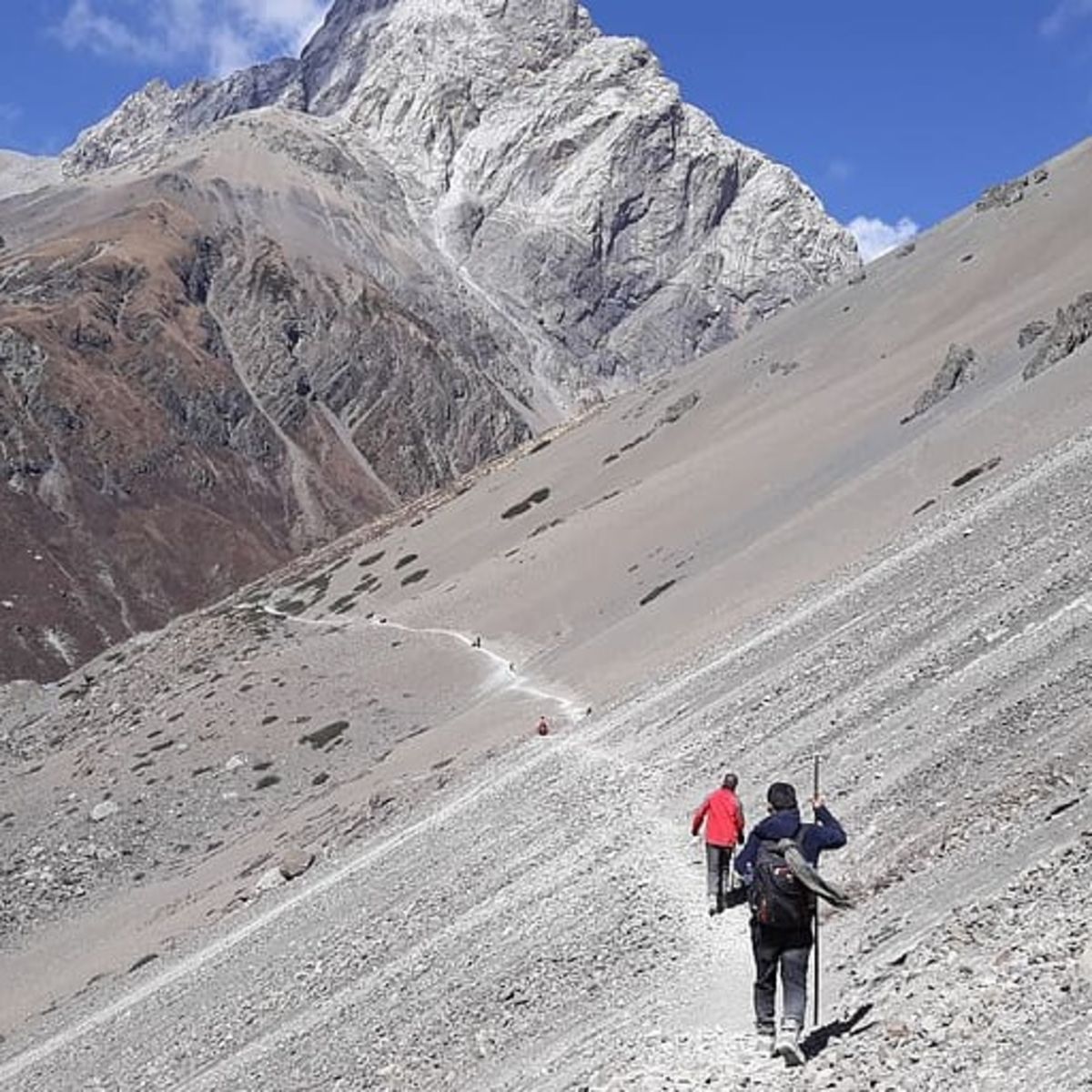
10 tips for trekking the Annapurna Circuit
We've got 10 great tips to help you prepare for, successfully complete and enjoy the Annapurna Circuit. And we bet that most of you will be pretty darn surprised to read tip #9!
1. Train strategically
The Annapurna Circuit route

Day 1: We start midday and cover 13.5 km, much of which is uphill hiking. Day 2: We trek nearly 14 km today. Day 3: We trek almost 16 km today. Day 4: We tackle a steep, 3.5 km roundtrip hike to the Ice Lakes on the cards if you like. Day 5: This is an acclimatisation day. Day 6: We cover 10 km. Day 7: We trek for 10 km, climbing ever higher. The effects of the low oxygen intake will be taking their toll on us. Day 8: We trek for 7 km and once again take a substantial leap in elevation. Day 9: This is our final day of trekking, and it’s summit day. We climb up to Thorung La Pass, the trek’s highest point at 5,416 m. We then descend to Ranipauwa. Overall we trek for 13 km, which includes a steep descent of nearly two vertical kilometres.
So how should I train?
Do training hikes Train at altitude (if possible) Build up your legs and lungs
1. Do training hikes
2. Train at altitude (if possible)
3. Build up those legs and lungs
Remember the saying: by failing to prepare, you are preparing to fail!
Know what to expect
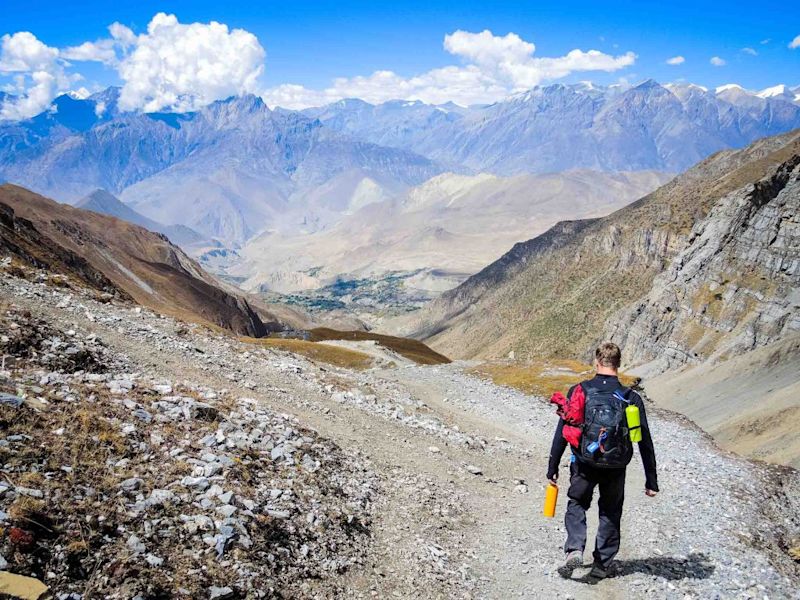
2. Pack like a pro
What should I pack?
Sleeping bag and inner liner Duffel bag and backpack Hydration bladder and water bottle Trekking poles (see tip #5) Clothing Footwear (see tip #4) Passport and visa Cash and bank card Altitude meds and first aid kit (see tip #3) Toiletries Tech items Comfort items (like a journal and pen) Snacks (see tip #7)
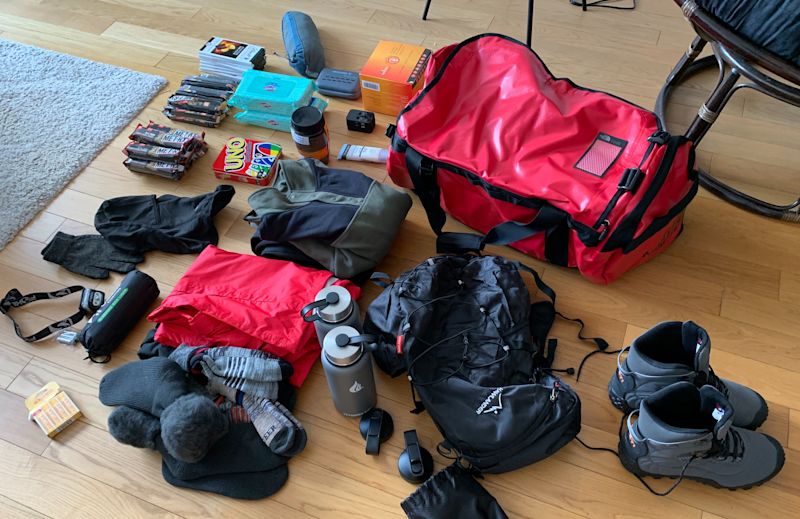
Don’t pack new things
Bring enough warm stuff
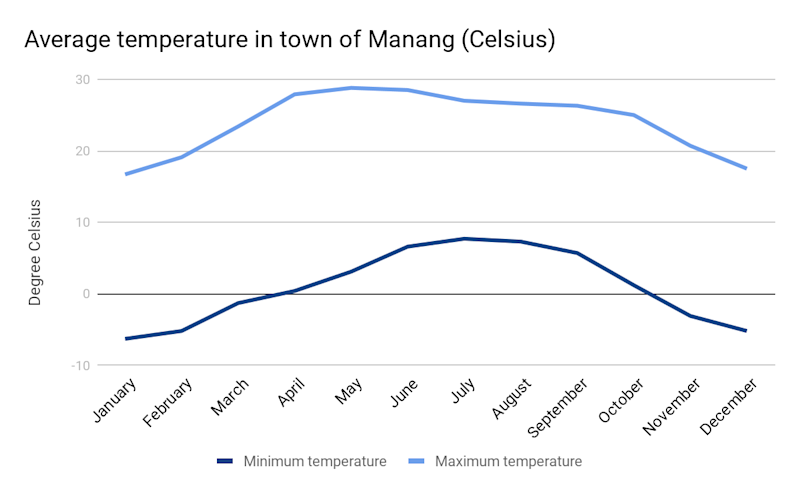
Keep it light!
Your duffel bag
Your backpack
Pack some cash
Cash for tipping
Plan your packing list in advance
3. Bring altitude meds
What is altitude sickness?
Visit your GP
Other meds
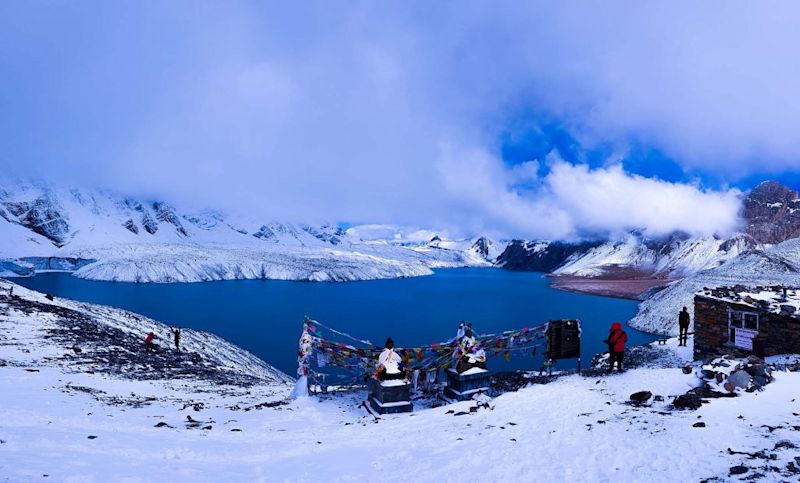
4. Pack the right footwear
Trekking boots Trainers Socks Gaiters
Trekking boots
Wear them in
Trainers
Socks
thermal socks hiking socks sock liners
comfort cushioning flat seams moisture wicking
Gaiters
5. Bring trekking poles
The anatomy of a good trekking pole
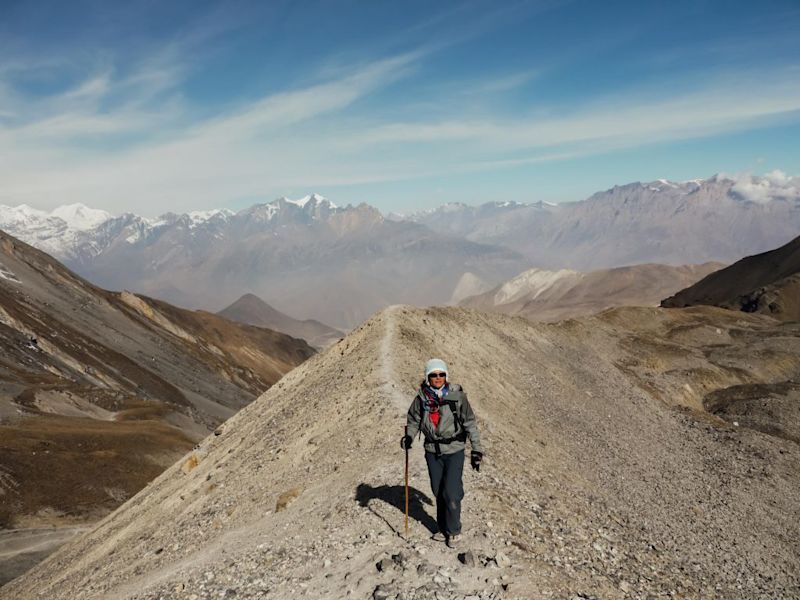
6. Take things at your own pace
Stay positive
7. Drink lots and eat everything
Eat everything on your plate
Stay hydrated
Pack your favourite snacks
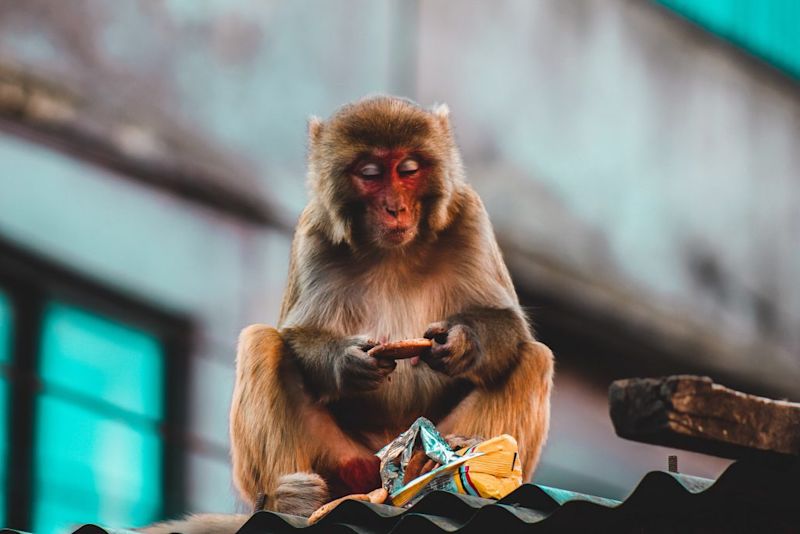
8. Protect your skin and eyes
a broad-brim sunhat polarised sunglasses quality sunscreen SPF lip balm
Ever heard of snow blindness?
9. Tuck electronics in your sleeping bag
Sleep with your water bottle too
10. Take a rest day on the up climb
Manang is the perfect resting place
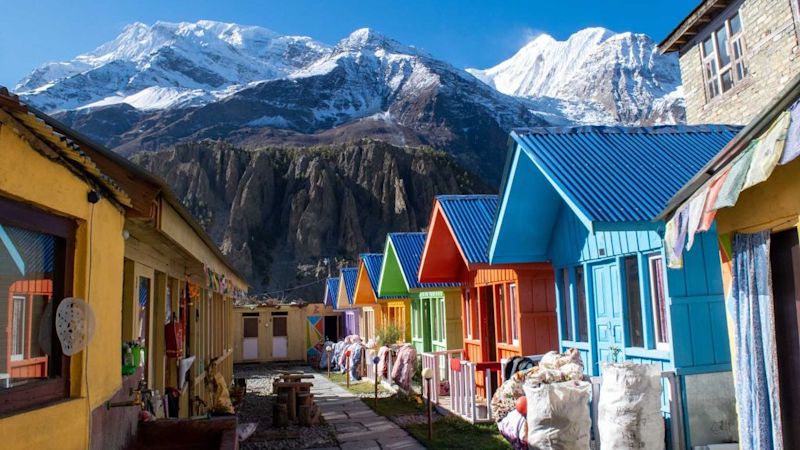
Hike high, sleep low
Don’t be nervous to join the Annapurna Circuit trek as a solo traveller!